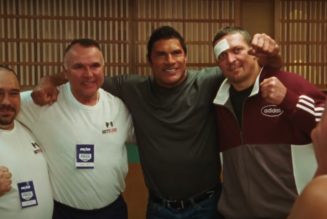In conjunction with NASCAR Productions, the MotorTrend Group recently pulled together a documentary on the Motor Trend 500 called The MotorTrend 500: NASCAR Heads West, about the legendary stock car race held at the Riverside International Raceway, in Riverside, California. The Motor Trend 500 ran from 1963 to 1971, and was foundational to the westward and eventual international expansion of the budding series known as the National Association for Stock Car Racing. In the early 60s, NASCAR was still in its infancy, a mostly southern United States racing series, nowhere near the racing juggernaut it is today. NASCAR races were not yet broadcast on TV, or even nationally on radio. It was only regional newspapers and some national, special-interest automotive magazines that covered such esoteric racing sports.
MotorTrend was one such magazine, and during the creation of this documentary, I was asked to comment on various aspects of the race, from its inception and popularity to the sponsorship by MT. There was only one problem: the last Motor Trend 500-mile race was held five years before I was born. I needed help.
I pressed him for context on how the MT500 came into being: what led Petersen Publishing founder Robert Petersen to pony up the cash to sponsor this big stock car race, 60-miles west of Los Angeles, in the orange fields of Riverside? I asked if he could provide a first-person account of what it was like to be trackside at the legendary Riverside International Speedway, and to see greats like Gurney, Parnelli, Foyt, and Andretti risk it all on that treacherous track?
Ever modest and unfailingly helpful, John wrote back: “I was not on the inside of the talks that led to the race so I can’t comment on that. What you read is what I experienced, which was very enjoyable. Sorry I couldn’t be more helpful with this piece and I understand if it slides under the delete key…”
The following are his notes of the Motor Trend 500, on background, never intended for publication.
Motor Trend 500
It would be ski jacket-cool in the morning, oftentimes a bit of haze hanging about. Not necessarily what you’d expect at a NASCAR race. No concern about snow here in January at Riverside Raceway in southern California
Unlike most NASCAR races there was no oval track enclosed by stands but a wide paved surface that seemed to meander into the distance. A perfect venue for the Motor Trend 500.
Seems a little odd now, naming a race after an automotive publication. Would we have had a Car and Driver 500? Likely not. But those were the times.
Of the major car publications such as Car and Driver and Sports Cars Illustrated, Motor Trend was the one that centered its testing and interest on Detroit automobiles. Chevrolets, Fords, Chryslers, Mercurys, Dodges, et al. Readers enjoyed Motor Trend because of its emphasis on those American cars whether a feature on a new Lincoln or Cadillac or a vintage “Retrospect” story about a Ford Model A or Model J Duesenberg.
It so happened NASCAR’s 500-mile race at Riverside featured the latest version of such cars, big Detroit iron. They’d had their interiors hollowed out, engines at full horsepower and volume, big fat tires, the car’s large exteriors covered with advertising. Full-race versions of the sort of cars Motor Trend loved and tested. A great fit.
Better yet, Motor Trend was headquartered in the heart of LA: Hollywood.
Executives from both sides teamed up and for nine years 1963-1971 the race at Riverside wore that title: Motor Trend 500. King of the ranch was Dan Gurney who won 6 times.
Somewhere around 50,000 spectators would make the early morning of around 50 miles from LA to the rather arid circuit, but it was worth it. To see Gurney slither up the broad esses, Parnelli Jones under hard braking for the esses, Curtis Turner sweeping through Turn 9. That cool morning often turned into a hot, windy afternoon, but it was also a welcome part of the Motor Trend 500. – John Lamm
In Memoriam
I have no business being in a documentary on the MotorTrend 500, especially among the motorsports giants the NASCAR Productions team was able to interview on camera. I can think of at least two dozen people more qualified than I to speak on behalf MT and this era (because I tried contacting them all) and John was at the top of that list. His notes and support were extremely helpful during my preparation, and I told him so. He wrote back: “Thanks Ed, I need that sort of reply these days… Regards from an infusion bed at City of Hope. Now go wash your hands… John.”
Thanks again, John. Rest in peace.










